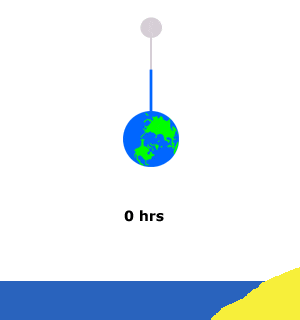Tides and Water Levels
Frequency of Tides - The Lunar Day
Most coastal areas, with some exceptions, experience two high tides and two low tides every day. Almost everyone is familiar with the concept of a 24-hour solar day, which is the time that it takes for a specific site on the Earth to rotate from an exact point under the sun to the same point under the sun.
Similarly, a lunar day (also known as a "tidal day") is the time it takes for a specific site on the Earth to rotate from an exact point under the moon to the same point under the moon. Unlike a solar day, however, a lunar day is 24 hours and 50 minutes. The lunar day is 50 minutes longer than a solar day because the moon revolves around the Earth in the same direction that the Earth rotates around its axis. So, it takes the Earth an extra 50 minutes to “catch up” to the moon.
Because the Earth rotates through two tidal “bulges” every lunar day, coastal areas experience two high and two low tides every 24 hours and 50 minutes. High tides occur 12 hours and 25 minutes apart. It takes six hours and 12.5 minutes for the water at the shore to go from high to low, or from low to high.

Unlike a 24-hour solar day, a lunar day lasts 24 hours and 50 minutes. This occurs because the moon revolves around the Earth in the same direction that the Earth is rotating on its axis. Therefore, it takes the Earth an extra 50 minutes to “catch up” to the moon. Since the Earth rotates through two tidal “bulges” every lunar day, we experience two high and two low tides every 24 hours and 50 minutes. Here, we see the relationship between the tidal cycle and the lunar day. High tides occur 12 hours and 25 minutes apart, taking six hours and 12.5 minutes for the water at the shore to go from high to low, and then from low to high. Note: This animation is shown from the perspective of a viewer in the northern hemisphere. From a viewer in the southern hemisphere, the rotation would appear to go clockwise.
Tides and Water Levels
